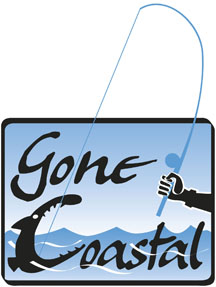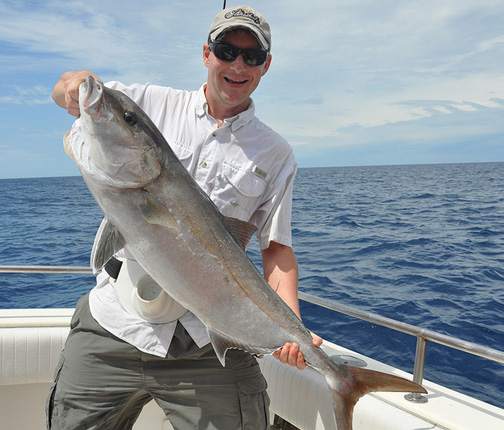
Panhandle best place in Florida to reel in the big jacks
When I first heard my brother-in-law, James “Jim Bob” Higgins, talking about catching full-grown greater amberjack on spinning tackle and top-water plugs, I was a bit skeptical, to say the least. Old Jim Bob, who has caught his share of AJs out of Carrabelle, is known to tell a fish tale or two. But this one has been verified, and if you get a chance to see what I’m talking about, I promise you won’t be disappointed.
Greater amberjack, which opened for recreational harvest in Gulf state and federal waters Aug. 1, are one of the strongest fish in the sea. They have been known to break expensive rods and bring the burliest of fishermen to their knees. Social in nature, when you find one, you generally find a whole bunch. They love artificial reef structures with an ample amount of vertical relief.
Need help finding an artificial reef to fish on? Visit MyFWC.com/Fishing and click on “Saltwater” and “Artificial Reefs” for coordinates in your area.
Water depth is also very important. In my experience, which is primarily limited to the Florida Panhandle region, the minimum depth for good amberjack fishing is about 65 feet, and most of the larger jacks will be in water depths greater than 80 feet.

Once you are anchored over the right location, what’s next? I like to start with some live bait to get them all fired up. Using a standard slip-lead bottom/fish finder rig with 60- to 80-pound test, drop a few frisky pinfish, grunts or blue runners halfway to the bottom. If AJs are in the area, it shouldn’t take long for the live bait to be inhaled. Remember, circle hooks are required when using natural bait and fishing for reef fish, which includes amberjack. Be sure to have your drag set appropriately for the tackle. With a circle hook, don’t ever try to set the hook. The AJ will do all the work, so just hang on till your rod bends over and it’s pretty much “fish-on” from there!
Once you catch a few on the grouper rod, put all that heavy tackle away and break out the spinning rods and bait-casters. I don’t mean your bait rod with 8-pound test, but something in the 17- to 30-pound range is perfect. The next thing you want to do is tie on a short piece of 40- to 50-pound mono leader and a big, obnoxious, top-water popping plug. I don’t think the color matters as long as it’s something bright and highly visible. Anything that catches your eye in the tackle store will also catch the jacks’, but you want to use one of the flat-faced chugger-type plugs that are designed to make a lot of commotion when you snatch them across the water.
Remember to remove the treble hooks and replace with a single hook. You might also want to smash the barb down to facilitate hook removal or go with no hook at all if you’re not intending to keep any more fish and just want to see some action.
Work the plug fast and watch the jacks explode in excitement! Get close-up photos or video of the action by dragging the plug in a figure-eight pattern right next to the boat. To keep the school of AJs in range, you might need to periodically chum with some of the live bait.
Good luck, and if you try them on the top-water plugs, give me a shout and let me know how you did or send me some photos or video to post on our website: MyFWC.com.
Remember, on the Atlantic side, there is no closed season, so you can enjoy this fishery on a year-round basis. The minimum size limit is 28 inches fork length in the Atlantic and 30 inches fork length in the Gulf, and the daily bag limit is one fish per person.
This second monthly issue of Gone Coastal is one of many ways that the Florida Fish and Wildlife Conservation Commission (FWC) Division of Marine Fisheries Management will be helping recreational anglers understand complex saltwater regulations and learn more about saltwater fishing opportunities in Florida. We are also available to answer questions by phone or email anytime, and we would love the opportunity to share information through in-person presentations with recreational or commercial fishing organizations. To contact the FWC’s Regulatory Outreach subsection call (850)487-0554 or email Alan.Peirce@MyFWC.com.
